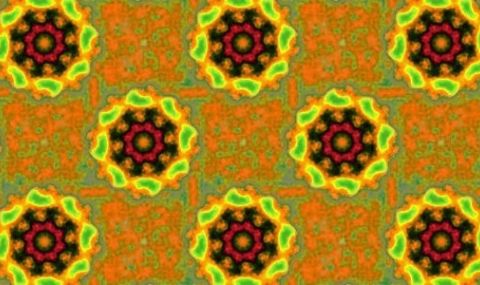Organelles are often defined as membrane-bound compartments within the cell. Recent years have seen a conceptual expansion to include protein assemblies ranging from enzyme oligomers to nuclear bodies. The interactions governing the assembly are typically weak and may involve a collective phase transition from disperse to gel form. We explored the ability of the well-known ferritin protein to form large self-assemblies in tissue culture cells. The ferritin protein contains 4 alpha helices that self-assemble into a nearly spherical hollow cage, whose primary physiological function is in the storage of iron. The cage contains 24 protein sub-units. The ferritin gene was fused to that of the yellow fluorescent protein. YFP has a weak tendency to dimerize in an anti-parallel orientation at a hydrophobic interface. The symmetry imposed by the ferritin coincides with the coordination of 12 in close-packing, meaning that each ferritin cage can attach bind each nearest neighbor cage through one or two YFP. The result is an intensely fluorescent crystal of cages. Eliminating the dimerization by mutation of the hydrophobic interface leads to dispersal of the crystals.
Linked references:
- Bellapadrona G, Elbaum M. (2014) Supramolecular protein assemblies in the nucleus of human cells. Angew Chem Int Ed Engl. 53:1534-7.



